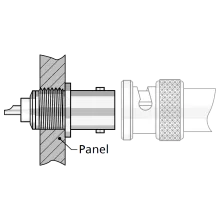RF connectors are often developed to mount to an underlying support structure. They may be soldered to a circuit board, screwed to a flat surface, secured through a hole with a nut, or simply left hanging in free-space. Each mounting mechanism follows an internationally recognised naming convention.
This article provides an overview of common RF connector mounting features. There are a multitude of variations among mechanisms such as right angle and elbow shapes, in the interest clarity these have not been listed.
Several illustrations used in this educational article have been provided with the generous assistance of Automatic Connector.
These types of connector are designed to be fed through and mounted from the front of a device or panel, serving as a practical means to transmit signals from internal circuitry through a panel. Its design incorporates a flange with two holes, enabling secure attachment via screws or bolts. Front mounting is very common and is particularly suitable for use with thin panels where rear mounting could compromise stability. Care should be taken with mechanical stress or vibration, as the thin panels with which they are commonly used may be susceptible to these influences.

This type of connector is fed through and secured from the front of a device or panel, serving to transmit signals from internal circuitry through a panel. This widely used design features a flange with four holes, allowing for attachment via screws or bolts. The additional two holes provide stronger mounting compared to 2-hole flange designs, offering improved mechanical stability and resilience, particularly against torsional forces. This attribute is particularly beneficial in high-vibration environments or applications where robustness is crucial.

This connector configuration is fed through from the rear of a device or panel, with the mounting nut situated in front of the panel for robust attachment. It is utilised to transmit a signal from internal circuitry through a panel, requiring only a single mounting hole. This rear mount design is particularly ideal for use with thicker panels, providing a secure connection while optimising spatial efficiency. Due to its practical and effective design for maintaining signal integrity and its ease of installation, the Rear Mount Bulkhead connector is a very common style in numerous RF applications.
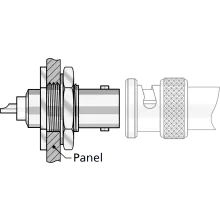
Bullet style connectors, such as those found in SMP interfaces, are designed to accommodate both radial and axial misalignments. This flexible design feature ensures reliable connections even in scenarios where perfect alignment may be difficult to achieve. Bullet connectors essentially bridge the gap between two board-mounted interfaces, creating a robust board-to-board connection. The design allows for expansion and contraction in the axial direction, as well as rotation and lateral movement, making it highly resilient to mechanical stresses. Their capability to ensure consistent signal propagation amidst physical misalignments makes Bullet style connectors an invaluable tool in RF applications where alignment is a challenge.
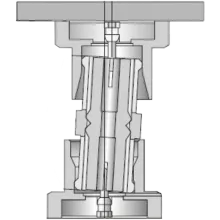
The most traditional type of RF connector cable connection, representing the attachment of the connector to an ordinary coaxial cable. A Free Hanging connector isn't secured to a panel, board, or any other fixture. This design provides maximum flexibility as it is not bound by a fixed mounting point, offering ease of handling and installation.
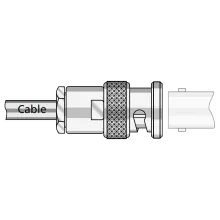
PCB Surface Mount connectors are specifically engineered to be soldered directly onto the surface of a Printed Circuit Board (PCB). This configuration offers a highly space-efficient solution, integrating the connector within the device's existing layout. The connection is established in congruence with a coplanar waveguide or stripline, facilitating the transmission of an RF signal over the PCB circuitry. As such, these connectors are essential for compact and integrated RF designs where direct signal propagation across the PCB is necessary.
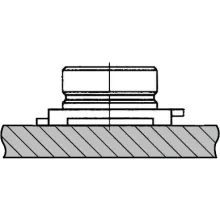
PCB Through Hole connectors utilise a design where pins are inserted into pre-drilled holes on one side of the Printed Circuit Board (PCB), then soldered onto pads on the opposite side. This design facilitates a mechanically robust connection, offering more durability compared to surface mount RF connectors. The through-hole connection not only provides a stable electrical pathway for the RF signal across the PCB but also ensures a strong physical bond, capable of withstanding mechanical stress. As such, PCB Through Hole connectors are a popular choice in RF applications where additional mechanical strength is required or where the device may be subject to physical wear and tear.
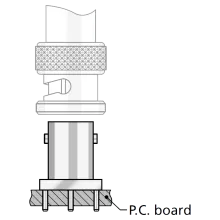
Press-Fit connector mounting is a method of attaching a connector through a bulkhead panel where the body of the connector itself is forcibly punched into the surrounding panelling. This type of connector body typically has serrations to produce a friction or interference fitting between the two surfaces.

The Thread-In mounting style involves a straightforward yet effective mechanism in which the thread on the supplied connector matches with the thread on the panel, enabling the two components to be securely screwed together. This design offers a reliable mechanical connection, ensuring stability and reducing the potential for loosening due to vibrations or other mechanical stress.
